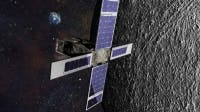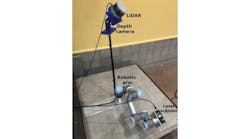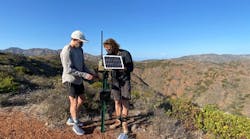Lockheed Martin has announced that it has signed a contract with NASA to develop and deploy SkyFire, a CubeSat with new infrared camera technology, to launch to the moon in 2018 with Orion’s Exploration Mission-1 (EM-1).
Once deployed, Lockheed Martin’s 6U-sized small satellite, SkyFire, will perform a lunar flyby, taking images of the lunar surface and its environment, performing observations to help address strategic knowledge gaps (SKG) related to surface characterization, remote sensing, and site selection observations. Data collected on thermal environments, according to NASA, will help scientists learn about the composition, structure, interaction with the space environment, and interaction with solar particles and the lunar regolith, all contributing to risk reduction for potential future manned missions.
Following the flyby and data collection at the moon, SkyFire will address Mars SKGs related to transit and long-duration exploration missions and will conduct additional CubeSat-based technology demonstrations to learn more about future deep space crewed and robotic missions.
"SkyFire’s lunar flyby will pioneer brand new infrared technology, enabling scientists to fill strategic gaps in lunar knowledge that have implications for future human space exploration," said John Ringelberg, Lockheed Martin’s SkyFire project manager. "Partnering with NASA for another element of the Orion and Space Launch System EM-1 flight is very exciting."
The infrared camera will capture high-quality images with a lighter, simpler unit.
"The CubeSat will look for specific lunar characteristics like solar illumination areas," said James Russell, Lockheed Martin SkyFire principal investigator. "We’ll be able to see new things with sensors that are less costly to make and send to space."
If successful, the infrared system on SkyFire could eventually be used for studies of planet’s resources, including analyzing soil conditions, determining ideal landing sites and discovering a planet’s most livable areas.
"For a small CubeSat, SkyFire has a chance to make a big impact on future planetary space missions," Russell explained. "With less mass and better instruments, we can get closer, explore deeper and learn more about the far reaches of our solar system."
View theLockheed Martin press release.
Share your vision-related news by contacting James Carroll, Senior Web Editor, Vision Systems Design
To receive news like this in your inbox, click here.
Learn more: search the Vision Systems Design Buyer's Guide for companies, new products, press releases, and videos






